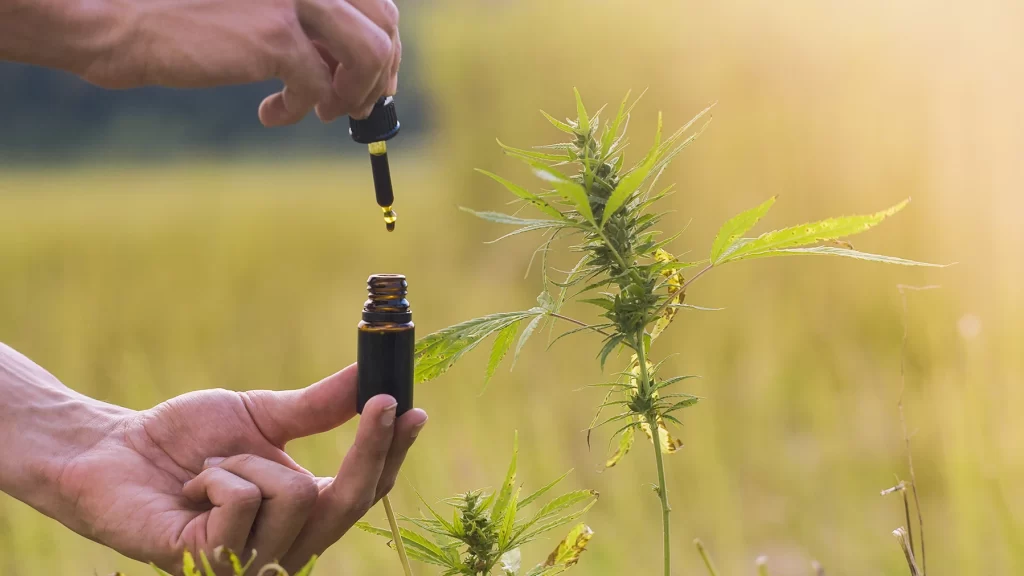The use of cannabis for medicinal purposes has grown significantly in recent years, fuelled by expanding research and shifting public perceptions. Medical cannabis is used to treat a variety of conditions, including chronic pain, epilepsy, and nausea associated with chemotherapy.

However, the effectiveness of cannabis as a medicine is closely linked to its bioavailability, which refers to the extent and rate at which the active compounds are absorbed and become available at the site of physiological activity. Understanding bioavailability and the various forms of cannabis medicine is crucial for optimising therapeutic outcomes.
Understanding bioavailability
Bioavailability is a pharmacokinetic property that measures the fraction of an administered dose of a drug that reaches the systemic circulation and is able to exert its effects. Or in other words, the amount of a dose required to feel the effects of a drug.
For cannabis, the primary active compounds are cannabinoids, notably tetrahydrocannabinol (THC) and cannabidiol (CBD). The bioavailability of these compounds can be influenced by the route of administration, the formulation of the product, and individual patient factors such as metabolism and digestive health.
Forms of medical cannabis
Medical cannabis is available in several forms, each with unique properties and implications for bioavailability.
Inhalation (Vaporisation)
Inhalation is one of the most common methods of consuming medical cannabis. When vaporised, cannabinoids are rapidly absorbed through the lungs into the bloodstream. This route offers high bioavailability, with effects typically felt within minutes.
Oral (Edibles and capsules)
Oral consumption involves ingesting cannabis-infused products such as edibles, capsules, or oils. This method has a lower bioavailability compared to inhalation because cannabinoids must pass through the digestive system and liver before entering the bloodstream — a process known as first-pass metabolism. This can reduce the concentration of active compounds and delay onset of effects, which may take 30 minutes to 2 hours to manifest. However, oral administration provides longer-lasting effects, which can be beneficial for chronic conditions.
Sublingual (Tinctures and sprays)
Sublingual administration involves placing cannabis tinctures or sprays under the tongue, where cannabinoids are absorbed directly into the bloodstream through the mucous membranes. This method bypasses first-pass metabolism, resulting in higher bioavailability than oral consumption. Effects are typically felt within 15 to 30 minutes, making sublingual administration a good option for patients seeking quicker relief without smoking.
Topical (Creams and patches)
Topical cannabis products, such as creams, balms, and transdermal patches, are applied directly to the skin. These products are designed for localised relief of pain, inflammation, or skin conditions without producing systemic effects or a psychoactive “high.” Transdermal patches, in particular, can offer controlled, sustained release of cannabinoids into the bloodstream over time, providing consistent therapeutic levels.
Rectal (Suppositories)
Rectal administration of cannabis via suppositories is less common but can offer a unique advantage in terms of bioavailability. This route bypasses much of the first-pass metabolism in the liver, potentially resulting in higher and more consistent absorption of cannabinoids. It can be particularly useful for patients who cannot take medications orally due to nausea or vomiting.
Challenges in medical cannabis
Despite the therapeutic potential of cannabis, several challenges complicate its use as a medicine.
Variable bioavailability
The bioavailability of cannabis can vary widely depending on the method of administration, individual patient factors, and the specific formulation of the product. This variability can make it difficult to achieve consistent dosing and therapeutic effects.
Dosing and standardisation
Accurate dosing is a significant challenge in medical cannabis. The concentration of active compounds can vary between products and batches, and individual patient responses can differ significantly. This lack of standardisation can complicate treatment plans and efficacy.
Regulatory issues
The legal status of cannabis varies widely across regions, which can affect availability, quality control, and research opportunities. Regulatory constraints can limit access to standardised, pharmaceutical-grade cannabis products.
Side effects and interactions
Cannabis can produce side effects such as dizziness, dry mouth, and psychoactive effects, particularly with THC-rich products. Additionally, cannabis may interact with other medications, which necessitates careful consideration by healthcare providers.
How Plantific can help with your understanding of medical cannabis
Medical cannabis offers a diverse array of products and administration routes, each with distinct advantages and challenges in terms of bioavailability. Inhalation, oral, sublingual, topical, and rectal forms provide various options to meet the needs of different patients and conditions.
Understanding bioavailability and the complexities of cannabis pharmacokinetics is essential for optimising therapeutic outcomes and addressing the challenges inherent in using cannabis as a medicine. As research continues to evolve, more refined and standardised approaches to medical cannabis will likely emerge, enhancing its efficacy and safety for patients worldwide.
Our introductory course to the cannabis industry provides a comprehensive and detailed learning experience with extensive listing of the required research areas to be briefed on the past, current and future aspects of the international legal medical cannabis industry.
The course provides a comprehensive understanding of medical cannabis, exploring its historical context, applications, evidence, research, conditions, and treatment with cannabis-based medicinal products (CBMP). It’s designed for healthcare professionals, including GPs, paediatricians, pharmacists, nurses, and it will also help patients and their families gain essential knowledge.
You can expect to:
- Gain insight into the historical uses of medical cannabis.
- Introduce the pharmacology of cannabis compounds: cannabinoids and terpenes.
- Understand, monitor, and control the potential risks associated with taking cannabis as medicine.
- Understand that the primary mode of action of cannabis is the interaction between cannabinoids and the endocannabinoid system.
- Understand the choices that physicians need to make to confidently prescribe cannabis to patients for different kinds of conditions.
- Understand the potential medical applications and the current state of clinical evidence.
- Recognize cannabis-based medicines, prescriptions, dosage, and administration methods.
- Understand common safety, legal, and ethical issues.
If you are interested in learning more, explore the various courses we offer.


